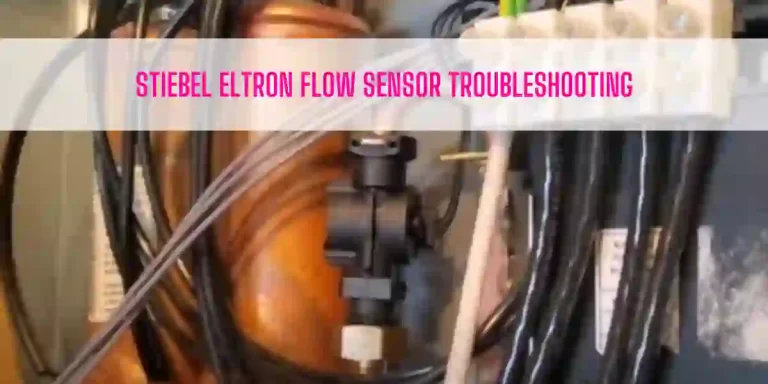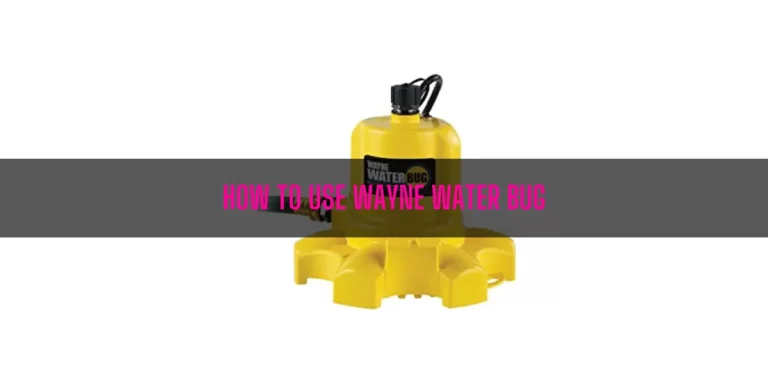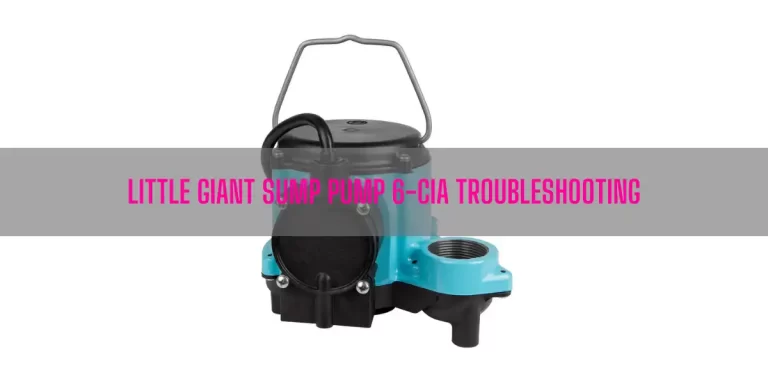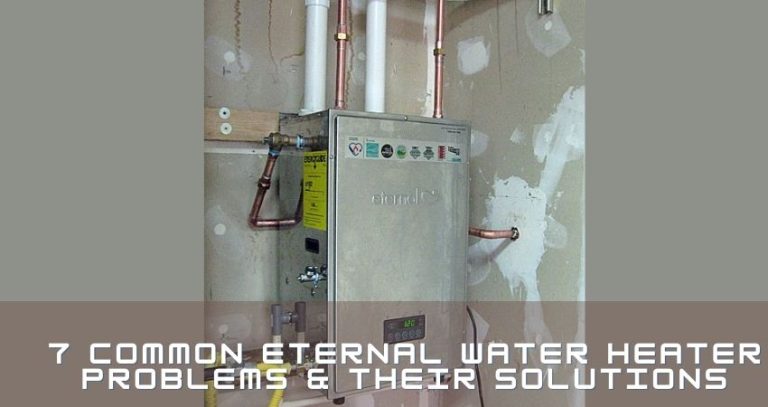Rinnai Tankless Water Heater No Hot Water [7 Easy Solutions]
Rinnai Tankless Water Heater will produce no hot water because of these reasons:
- Cross plumbing connections
- Inconsistent gas flow
- Incorrect gas type and gas supply pressure
- Air in the gas lines
- Dirty air filter
- Flame sensing rod gets dirty
- Unit gets clogged up
Throughout this guideline, I will show you how to troubleshoot these issues and fix them. So, keep reading till the end.
Table of Contents
Rinnai Tankless Water Heater No Hot Water [7 Easy Solutions]
Now, let’s see how to troubleshoot your Rinnai tankless water heater to find out the culprits that prevent the unit from producing hot water.
01. Cross Plumbing Connections
Plumbing cross connection is the first culprit that causes your tankless water heater to not deliver hot water. If your installer or you make a reverse connection, you will not get any hot water from the unit.
Here reverse connection means you connect the hot water lines into the cold water inlet and the cold water lines into the hot inlet.
Besides, a faulty mixing valve can cause a crossover of hot and cold water. ‘Water not hot enough’ is such a complaint from the result of a defective mixing valve.
How To Fix:
Begin with checking the plumbing connections. Ensure you attach the cold water lines to the cold water inlet and the hot water liens into the hot inlet.
Next, check the mixing valve for a visual sign of damage. If it gets defective, replace it with a new mixing valve.
I highly recommend you hire a qualified plumber to test the cross-over of hot and cold water as this happens because of a mixing valve. It is because the cross-over will occur though there is no visual sign of leak or trouble.
02. Inconsistent Gas Flow
A consistent amount of gas flow is required to fire up your Rinnai tankless water heater. If the unit doesn’t get sufficient fuel, you can’t ignite the heater.
A bad gas meter is the reason for inconsistent gas flow. Turns out, opening the gas control valve partially will not deliver the right amount of fuel to the combustion chamber. As a result, your tankless water heater fails to produce hot water.
How To Fix:
First off, inspect the main gas control valve of your water heater and ensure it’s in the on position. If it’s off, just turn the gas control valve counterclockwise to let the gas flow freely. Ensure you turn the gas valve fully, not partially.
Secondly, check the gas meter and make sure it’s in the functioning condition. If it looks fragile or gets defective, replace it with a new one.
Nonetheless, don’t forget to check whether there is sufficient gas in the tank or not. If it seems empty, fill the tank with gas.
03. Incorrect Gas Type and Inlet Gas Pressure
Feeding your tankless water heater with incorrect fuel will cause the unit to not ignite. If your unit requires natural gas to operate but you fuel it up with propane, it will never turn on. As a result, you won’t get any hot water out of the water heater.
Similarly, a tankless water heater requires proper inlet gas pressure for combustion. If the inlet gas pressure goes out of the range, you can’t operate the unit- let alone getting hot water.
How To Fix:
Firstly, check the sticker on the water heater and see what kind of gas it requires to operate the unit. Feed the water heater with natural gas if the unit recommends it. Otherwise, fuel up the unit with propane gas.
Secondly, ensure you get the correct inlet gas pressure to your water heater. For proper water heater operation, the range of gas supply pressure should be like the following chart based on the fuel type:
| Gas Type | Minimum | Maximum |
| Natural Gas | 3.5 in. wc | 10.5 in. wc |
| Propane Gas | 8.0 in. wc | 13.5 in. wc |
Keep in mind; you need a manometer to measure the gas pressure. If you don’t know how to measure the gas supply pressure, I suggest you call a professional for that.
04. Air In the Gas Lines
You must bleed the air from the gas lines to let the gas flow free through the line. If there is air in the gas lines, the unit will not get the amount of gas it requires for operating the water heater.
How To Fix:
It’s simple to purge the gas lines. However, if you find it difficult, you can watch this tutorial to learn how to bleed the gas lines:
05. Dirty Air Filter
Most tankless water heaters come with an air filter to draw fresh air from outside for combustion. If the air filter gets clogged by dirt, debris, and lint, it fails to collect sufficient amounts of air into the combustion chamber. And without air, it’s impossible to fire up the water heater.
How To Fix:
You should inspect this filter periodically to maintain optimum water heater operation. If it gets restricted by lint, complete the following steps to clean the air filter:
- Turn off the unit by pressing the On/Off button on the controller.
- Unscrew the four screws that hold the front cover in place and remove the cover.
- Locate the air filter, which you can find at the upper right-hand corner of the unit.
- Now, pull out the ‘Filter Pull to clean’ tab and remove the filter.
- Apply some cleaning solution of mild soap and scrub the air filter gently with a soft bristle brush. Then, rinse the filter with clean cold water.
- Dry the filter with a lint-free towel.
- Reinsert the filter into its place and power on the water heater.
If the air filter gets damaged, I recommend you call a certified technician to replace it professionally.
06. Dirty Flame Sensing Rod
A dirty flame sensing rod can also be a culprit that prevents your water heater from producing hot water. Over time, this flame sensing rod gets covered with dirt and gas residue. As a result, it fails to sense the flame and prevents the unit from igniting.
How To Fix:
First off, turn the unit off and remove the front panel. Then, locate the flame sensing rod on the unit and detach it. Then, use a paper dollar bill or soft emery cloth to scrub the sensing rod gently.
If cleaning of this part brings no luck, you must replace it with a new one. And the following video will help you in this case:
07. Unit Gets Clogged Up
Your Rinnai tankless water heater will no longer work if its heat exchanger gets clogged by mineral or lime deposits. The heat exchanger won’t exchange the heat or heat the water if it gets covered with scale and rust.
Generally, the heat exchanger gets restricted by hard water. That’s why you should flush the unit once a year. However, if you live in a hard water area, scale forms on the element quickly. In this case, you should flush the water heater twice a year.
How To Fix:
Flushing the tankless water heater is not rocket science. Of course, you can hire a professional to do this task. But it will save you some bucks if you flush the water heater by yourself.
Fortunately, I already covered a guide on Rinnai Tankless Water Heater Flush, where I described how to flush a unit properly. So, check that article.
End-Note
No hot water is a common problem on a Rinnai Tankless Water Heater. You can easily resolve this issue by following the troubleshooting steps I mentioned. However, you are always open to call a professional if you fail to fix this issue after trying out my guideline.
Read Also:
- Rinnai Tankless Water Heater Problems
- Rinnai Tankless Water Heater Reset Button
- Navien Tankless Water Heater No Hot Water

Eric Alvarez is the head of content on LilDutchUncle.Com. He is an HVAC guy based in El Paso, Texas, United States. He obtained his Bachelor of Science degree from the University Of Texas at El Paso. Years of experience in the HVAC field have taught him many lessons, not the least of which is that the value of quality and knowledge far exceeds any promised initial savings. He has a good standing reputation for superior skills in heating, air conditioning, hot water tanks, and indoor air quality systems.





